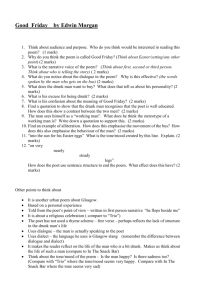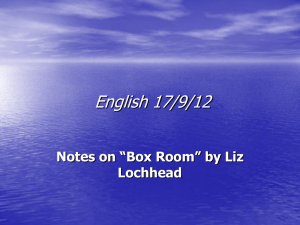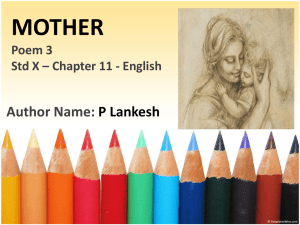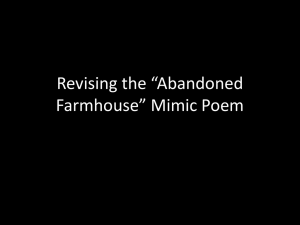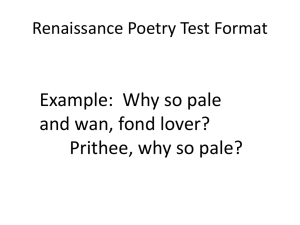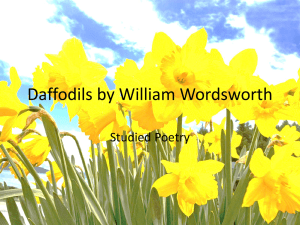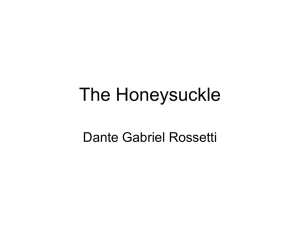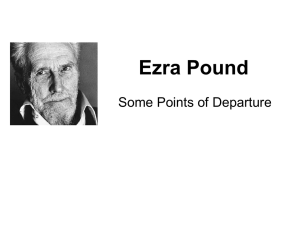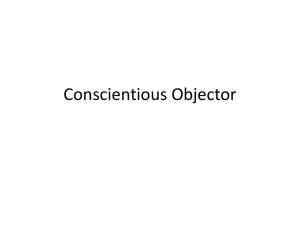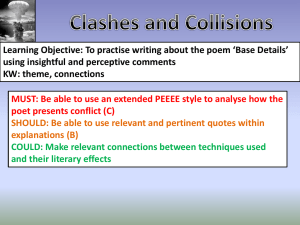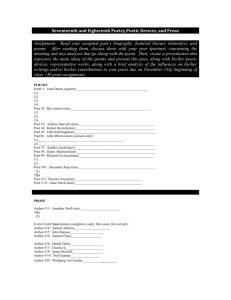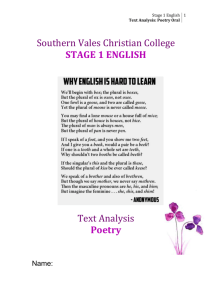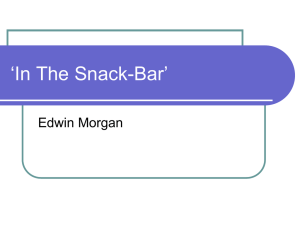Morgan poetry
advertisement
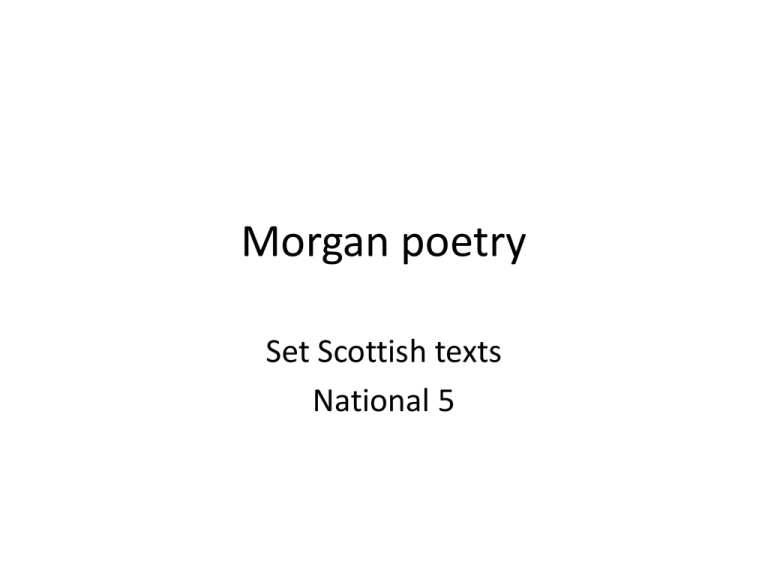
Morgan poetry Set Scottish texts National 5 Final question in critical reading Poem “Trio” is given in full; this is final comparison question. With close textual reference, discuss in what ways this poem is similar to another poem or poems by Morgan you have studied. You may refer to ideas and/or language in your answer. Marking Instructions Candidates may choose to answer in bullet points in this final question, or write a number of linked statements. There is no requirement to write a “mini essay”. Up to 2 marks can be achieved for identifying elements of commonality as identified in the question. A further 2 marks can be achieved for reference to the extract given. 4 additional marks can be awarded for similar references to at least one other text/part of the text by the writer. In practice this means: Identification of commonality (2) (for example: theme, central relationship, importance of setting, use of imagery, development in characterisation, use of personal experience, use of narrative style, or any other key element…) from the extract: 1 x relevant reference to technique (1) and 1 x appropriate comment (1) from the second poem you choose: 1 x relevant reference to idea (1) and 1 x appropriate comment (1) 1 x relevant reference to feature (1) and 1 x appropriate comment (1) For you>>> • 2 marks • What thing s do the two poems have in common? • Try to mention a couple of things e.g. • • • • • Point of view – all the poet’s Narrative voice – first person (the poet) Full of realistic detail (setting/dialect) Subject – about people Present tense For you>>> Good Friday • 4 marks Give at least 2 examples from your other chosen poem and explain e.g. • Point of view – all the poet’s – /Narrative voice – first person (the poet) • poet is describing a conversation he has with a drunk man on a bus. He makes it clear that he likes this person and has sympathy for him, even though he is drunk. • Full of realistic detail (setting/dialect) • Good Firdayis set in Glasgow – the poet lets us know it is 3 o’clock on the afternoon of Good Friday. This detail help makes the poem more realistic and the character more believable • Subject – about people • The drunk man is presented as an ordinary working class man. He is presented sympathetically. Although not educated “ignorant” he shows that he knows this and tries to get the narrator to explain. Also shows he is a caring father because he is out to buy Easter eggs for his children. • Present tense • Creates an sense of immediacy and involves the reader e.g. ‘lurches’ etc makes us feel as if we are on the bus, feeling the movement and sharing the experience. For you>>> In The Snack-bar • 4 marks Give at least 2 examples from your other chosen poem and explain e.g. • Point of view – all the poet’s – /Narrative voice – first person (the poet) • poet is describing a helping a disabled man to the toilet – we get to share this experience and understand the changing attitude of the poet – to begin with he is impatient, then he decided to help and his sympathy grows. At the end it is clear he feels anger for the man’s situation when he says: Dear Christ to be born for this” – this suggests he is angry at God for giving this man such a difficult life. • Full of realistic detail (setting/dialect) • In the Snack-bar is set in Glasgow ordinary cafe, but presents real difficult for the subject of the poem as he needs help to get to the toilet which is downstairs. Makes situation very real and convincing. • Subject – about people • The disabled man is presented in two different ways – as something frightening to be avoided “monstrous” and something to be pitied and admired as he fights his way to the toilet – and slowly we go down” – repetition emphasises how hard it is to get to the toilet and how long it takes Sample answers Commonalities (similarities) of three poems studied. These include: viewpoint (poet’s voice); all poems in present tense; all concerned with people in real life settings in Glasgow; all have a reference to religion. Remember to justify your point with close reference to poem, preferably quotation. Refer to technique /idea/feature in “Trio” and similar technique/idea/feature in either “Good Friday” or “In the Snack Bar” or both. Make a comment explaining how/why these are similar – for example: In “Trio” and “Good Friday” direct speech is used and the characters in both poems speak using Glasgow dialect. The boy in “Trio” says: “...Wait till he sees this but!” while the slurred speech of the drunk man in “Good Friday” is well conveyed: “D’s this go...right along Bath Street?” with the use of contracted words.
